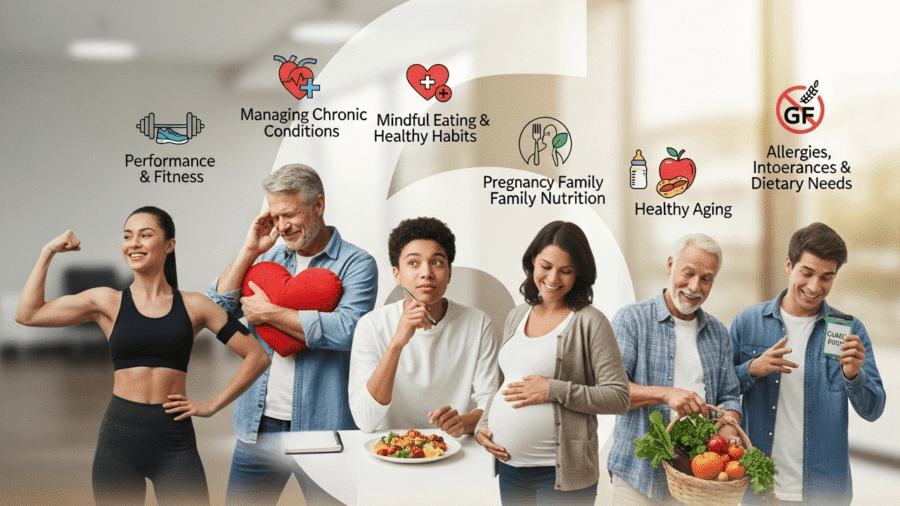If you’ve recently decided to, or been advised to, improve your nutritional intake, you’ll soon discover that there’s a lot of advice and recommendations out there. While this may seem like a good idea, it can become challenging when information and suggestions contradict each other every time you click onto a new “know it all site” site.
You can avoid having to deal with this frustration by visiting the dietitian Noosa locals rely on for quality advice and guidelines. What is a dietitian, and how will visiting one benefit your overall health? Keep reading as we explore these answers.
Table of Contents
Understanding What a Dietitian is
Simply put, dieticians are practicing experts in various aspects related to food, nutrition, and meal planning. Typically, a dietitian must have a university degree in nutrition and should meet the criteria as set out by Dietitians Australia as an Accredited Practicing Dietitian (APD).
Dietitians assess the current nutritional needs of people of all ages and use the information gathered in these assessments to create improved meal plans. The goals of these plans are to improve nutrition and overall health by giving you guidelines for what you should be eating. These eating plans are usually tailored to your current health and specific dietary needs.
Many Ways a Dietitian Can Assist Your Family
There’s a misconception that you will only need a professional dietitian if you’ve been diagnosed as being obese. The reality is that there are several reasons why your physician may refer you to these nutrition experts. We’ve compiled a list of the most significant reasons.
1. Can Help You With Weight Loss
As we’ve already mentioned, the most obvious reason to see a dietitian is usually for guidance with the most effective foods to create and sustain weight loss. If you’ve been struggling with achieving or maintaining a healthy weight for a long time, then you will already know that fad diets aren’t the solution.
The main reason for this is that fad diets are often not designed for long-term weight loss. They’re also unsustainable and can lead to nutritional deficiencies. A huge negative here is that these diets are often made up of unhealthy eating patterns and involve binging and deprivation. A dietitian will advise you of a more balanced approach that is a combination of physical activity and long-term food management.
2. Assistance With Weight Gain
Being healthy isn’t always about losing weight. In some cases, an individual may have lost excessive weight after an illness, or they may be dealing with an active eating disorder. The best solution here is to have your health and eating habits assessed by a dietitian. They will then create a comprehensive eating plan that will help you reach the right weight for your age and body type.
3. Helps You Overcome Food Sensitivities and Allergies
Anyone who has ever experienced gut issues will know that these issues can often be attributed to food sensitivities or allergies. Two of the more common issues that arise from this are gluten intolerance or celiac disease. Dealing with these conditions can be challenging, especially since it can be difficult to find the right foods to sustain a healthy eating plan.
Dietitians will help you identify and find the right ingredients and food types that will not only provide you with nutritional value but will also keep you healthy. Your dietitian will teach you to read food labels and find replacement ingredients to suit your specific sensitivity or allergy.
4. Can Help You Feed Picky Eaters
Anyone taking care of kids or elderly relatives will know that they can often be picky eaters. Trying to create nutritional meals to accommodate everyone in your home can be difficult and time-consuming if you find yourself having to make several different dishes with every mealtime.
Your dietitian will help you create an eating plan that balances your family’s preferences with effective nutrition. They will also provide strategies that help younger eaters become more open to trying new foods, such as different vegetables and fruits.
5. Guides Athletes’ Performance
Dietitians aren’t only around to help us regular folk eat better. They are also available to help athletes and sports enthusiasts eat the right nutrients to help them improve their overall performance. This is because food is fuel, and eating the right types will ensure that an athlete gets the right amount of energy when they need it.
6. Assists With the Right Foods for Chronic Diseases
Some chronic diseases, such as heart disease, diabetes, and irritable bowel syndrome, are closely associated with the types of food you eat. Eating the wrong foods can aggravate these conditions, which can seriously hamper your health. Adopting a healthy eating plan can significantly improve your health.
Final Thoughts
There are many reasons why you should consider seeing a dietician. Whether you’re looking to improve your family’s eating habits or you’ve recently been diagnosed with a chronic illness, a professional dietitian will be able to provide you with the necessary nutritional education. This will go a long way to ensuring that you and your family are eating healthily and getting the right nutrients to keep you fit and strong!












